Homemade Lemon Wine Recipe
We’ve all heard about wines made with berries – not to mention grapes – but have you ever come across a citrus wine recipe?
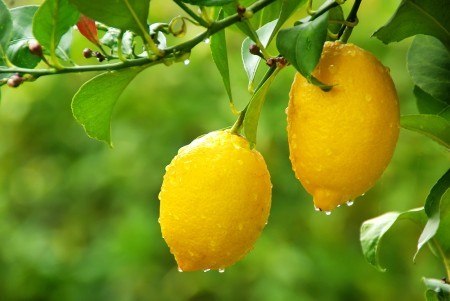
Despite the commonly held view that fruits used for wine have to be sugary, citrus fruit makes for truly unique, great-tasting wine.
And though lemons may not be the first fruit to come to mind when considering new wine-making ideas, with the addition of sugar and grape derivatives, they’re perfectly suited as a basis for crisp, clear wine.
If alcohol made from lemons sounds like it wouldn’t be very tasty, think again! Follow the lemon recipe below for delicious, refreshing citrus wine, perfect for a hot summer’s day.
Ingredients
For 1 gallon of lemon wine:
- 10 mid-sized lemons
- 3 lbs sugar
- 1 lb raisins
- 1 tsp yeast nutrient
- 1 tsp pectic enzyme
- 1 packet wine yeast
- water
Equipment
Although this citrus wine recipe doesn’t call for any highly specialist equipment, you do need some basic winemaking items.
There are various methods for fermenting lemons and different variations of lemon wine recipes. This one calls for the following:
- 1 large saucepan – ensure it’s big enough to safely contain the ingredients, leaving enough room for you to comfortably stir
- 2 glass demijohns with a fitted airlock and bung – you need one each for primary and secondary fermentation. If you’d like to keep the lemon slices intact in the mixture during primary fermentation, you’ll need a wide-mouth glass demijohn. Standard ones will do just fine, though!
- siphon tube for transferring the liquid between the demijohns. If you’re missing a siphon, a funnel covered with clean cloth can suffice.
- glass bottles to store the finished wine
How to Make Lemon Wine
1. Preparing the mixture
If you have a wide-mouth demijohn on hand, start by cutting the lemons into thin slices. For a narrow-neck fermenter, zest and juice the lemons instead.
Place the lemon (slices or zest and juice) in a large saucepan with the sugar and raisins. Fill with water and bring to a boil. Boiling will remove any bacteria, which is necessary for the mixture to ferment rather than spoil.
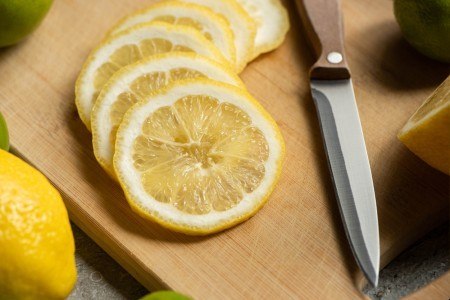
The raisins are added for a reason – namely, to provide nutrients for the yeast. Light-colored raisins (such as golden sultana) are the best choice if you want your finished wine to be the color of lemonade.
Once your mixture has reached boiling point, turn off the heat and stir gently until all of the sugar has dissolved. Leave to cool before proceeding with the next step.
Recommended: Create your own homemade pumpkin wine with this easy to follow recipe.
2. Primary fermentation
Once your mixture has cooled down, pour it into a sterilized, glass demijohn. If you’re using a wide-mouth fermentation vessel, don’t discard the slices – just pour it all in!
In case you’re new to home-brewing and wine-making, be aware that for the process to work properly, all of the vessels and equipment have to be free of bacteria. Any residual life forms will cause your would-be wine to spoil.
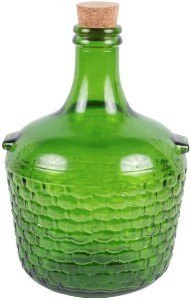
Next up, dissolve the wine yeast in water and add it to the demijohn, followed by the yeast nutrient. The yeast is the active fermentation agent, and the yeast nutrient sustains the yeast during the fermentation process.
At this point, you can also add the pectic enzyme. Although it’s not strictly a necessary ingredient, it will help the wine to clear.
Once you’ve added the yeast, the nutrient, and the pectic enzyme, stir the mixture, cover the demijohn, and leave to sit.
To determine whether primary fermentation has finished, observe the bubbles going through the airlock. When there are at least several minutes of stillness between each bubble, the liquid is ready to rack.
In most cases, this should take up to 10 days. When the bubbles have almost stopped, your soon-to-be citrus wine is ready for step three.
3. Secondary fermentation
Using a sterilized siphon tube, transfer the liquid to the second demijohn. By the time your wine is ready for secondary fermentation, there’s likely to be a fair amount of residue – such as remains of lemon rinds, lemon pulp, and brewing sediment – in the liquid.
When transferring, take care to leave all of this behind, allowing only liquid into the secondary vessel. If you siphon the wine very gently, you may be able to just leave the residue in the bottom of the first container.
To make absolutely sure you remove any lemon pulp during the siphoning, run the liquid through a fine-mesh strainer. Don’t forget that the strainer will need to be sterilized before use, too – otherwise, you may end up with bacteria making its way into your secondary vessel.
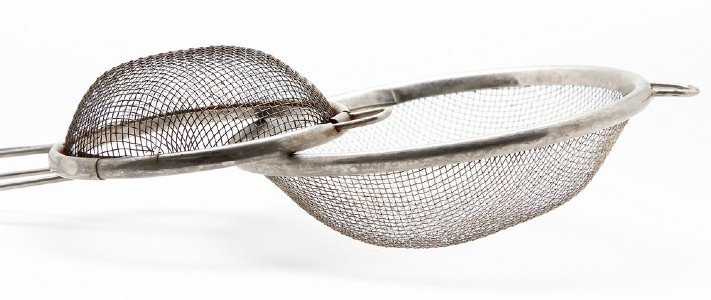
If you don’t have a siphon or a strainer, a funnel covered with a clean cheesecloth can do the job – provided the amount of wine you’re making allows you to pick up the demijohn and pour from it.
A purpose-made siphon is a much better option, however, as it’s easier to maintain a sterile surface. This significantly decreases the risk of contamination with bacteria.
This stage is called racking, and in the case of citrus wine, it takes approximately 6 to 8 weeks. You do not need to refrigerate the wine at any point during the fermentation process – instead, keep the demijohn in a dark place at room temperature.
4. Bottling
You’ll know your wine is ready for bottling when fermentation has stopped – indicated by no bubbles in the airlock. By then, the liquid should also have cleared, especially if you added the pectic enzyme in step 2.
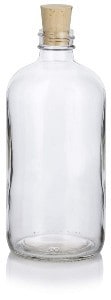
With the aid of a clean funnel, transfer the lemon wine into glass bottles and cork them. Unfortunately, it’s not ready to drink quite yet – it’ll need to age for a minimum of three months. The longer it’s left in the bottles, the fuller and more complex the flavor will become.
Recommended: Try making a strawberry wine at home and see why it's considered one of the nicest fruit wines to make at home.
Summary
So, to sum up, here are the steps for making lemon wine:
- Boil lemons, sugar, raisins, and water.
- Cool, then pour into a fermentation vessel and add wine yeast, yeast nutrient, and pectic enzyme. Seal and leave for approx. 10 days.
- Siphon into a secondary fermentation demijohn, leaving all residue behind. Leave for approx. 6-8 weeks.
- Bottle and store for at least 3 months.
And there you are – now you know how to make lemon wine! Hope you enjoyed this lemon wine recipe at least as much as you’ll enjoy your citrus wine when it’s ready to drink.

I really liked the content. Am starting my Wine Business this week and I will consult more from you. Thanks